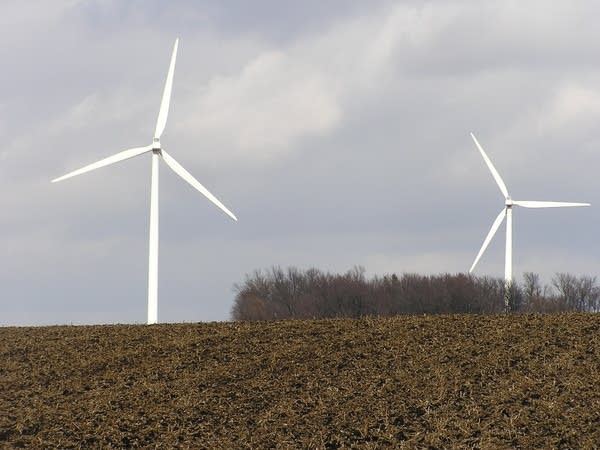Xcel using bus-sized batteries to store wind energy
Go Deeper.
Create an account or log in to save stories.
Like this?
Thanks for liking this story! We have added it to a list of your favorite stories.

In southwest Minnesota, near the town of Beaver Creek, Xcel Energy's Frank Novachek showed off a grey metal container about the size of a double-decker bus. Novacheck said the box contains about 20 battery packs, the state's first utility-sized electricity storage facility.
"We're not the only ones using this type of battery, but we're the only ones thus far testing if for wind integration purposes," Novachek said.

The battery storage will help in a several ways. It can provide electricity when there's not enough wind to run the nearby turbines and the batteries will also help during peak demand times. They'll be able to store energy generated during summer nights for example, then release the power the next afternoon when air conditioners are working their hardest and electricity demand peaks.
Novachek said electricity storage will become increasingly important in the years ahead. He said, as the company increases the number of wind turbines in its system, there will come windy days when those machine produce too much electricity.
Turn Up Your Support
MPR News helps you turn down the noise and build shared understanding. Turn up your support for this public resource and keep trusted journalism accessible to all.
"We start getting into a situation where we will have many circumstances where our grid can't take all the wind that we have," Novachek said.
He said in that circumstance, the company might have to take wind turbines offline. But Novachek said that waste of wind power could be avoided if the batteries work as well as the company expects they will.
"We hope that we don't have to dial back wind if we have storage," Novachek said. "We'd be able to store it instead of dialing it back."

The batteries can store enough electricity to supply 500 homes for seven hours. The Xcel battery unit is being tested now and it's expected to be fully on line next spring.
Xcel is not the only power company experimenting with battery storage. Ohio-based American Electric Power has been using the technology for about two years. AEP's Ali Nourai calls the batteries a success, but said there were setbacks.
"Components failed on us," Nourai said. "And overheating, under heating, all kinds of issues which we had never experienced before. And if it doesn't work right you may damage the battery, you may damage the grid, because you're dealing with a lot of energy."
Nourai said as the technology improves it may be possible to put together bigger blocks of batteries to provide days, instead of hours, of electricity storage. But for right now, the only proven method of storing that much electricity involves pumping air under ground.
"We can take that excess wind capacity and use it to store energy in the form of compressed air," said Kent Holst, who is directing the effort to build this sort of storage system in Iowa. "And then release it during the high demand hours."
Holst said, in about four years when the project is finished, wind-generated electricity will drive air compressors. The compressed air will be pumped 3000 feet underground into porous rock that will absorb the air. The porous stone is capped by solid rock which prevents the air from escaping.
"It's kind of like an upside down bowl," Holst said. "It's about a mile and a half long and about a mile wide."
To generate electricity, the compressed air is brought back to the surface, mixed with natural gas, and then burned to drive generators. One of the problems with the compressed air system is efficiency. Some critics said it yields only half of the electricity originally generated.
The battery technology Xcel Energy is using is about 80 percent efficient. The big advantage of compressed air is size, it can hold ten times the electricity of the largest battery storage system. That's caught the interest of Xcel. Company officials said they're in the initial stages of studying whether Xcel Energy should invest in a compressed air storage facility.




